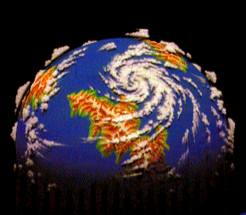And that is the scientific reason the Appalachians are haunted as hell.
We worship the Old Gods in them there hills.
I had to look if this was posted in Science Memes or RPG Memes.
The mountains aren’t older than dinosaurs. They are older than bones.
TIL dinosaurs didn’t have bones.
All dinosaurs may have bones, but not all bones are from dinosaurs.
This is not the poster is pointing out.
It’s basically two booleans that don’t go together
Is the mountains older than the dinosaurs = false
Is the mountains older than bones = true
They should both be true, but the writer had the first be false, hence leading to all dinosaurs being boneless. I guess it’s a colloquialism in the English language, otherwise all y’all wouldn’t had downvote the poster for being pedantic
Dang I didn’t even notice that logical inconsistency until you pointed it out. It should say “The mountains aren’t just older than dinosaurs.”
Of course you’re getting downvoted to hell because everyone either didn’t slow down to read it more carefully or can’t understand sarcasm.
Hehe. I was being cheeky and expected a few downvotes.
I don’t like it when understandable-but-imperfect grammar is needlessly harped on about either, but I thought this “mistake” and its placement in the post was funny so I pointed it out anyway.
They didn’t. The bone like structures inside of dinosaurs are called fossils, and they’re closer to rock than bone
I’m not really a science person, but that was super cool to read!
I love the amount of praise in these comments. My dad is a geologist and used to always gush about the Appalachians when I was growing up
Appreciate the Appalachians adequately, alright?
One thing that will never seem to leave my head is that I had read that the current mountain tops of the Appalachians are actually the original valleys of the mountain range. The mountains were so old and large that the valleys of todays Appalachian’s were the footprint of what was once maybe the largest mountain range earth has seen
I think they were as tall as the Alps are now - because the crust essentially “floats” on the mantle as mountains are eroded (and glaciers slide off), the land gradually rises
https://www.brown.edu/news/2016-11-21/appalachians :)) so cool, i love science so much
What we see now are the ancient roots. Before the continental colision, there was a sea and subduction zone. This gave us sandstones, diorite, and granite… All of which were crushed at incredible pressure and temperature by the continental collision. At the deep roots of the mountains, this transformed the rock into gneiss, marble, and other extremely hard rock. Additionally, the forces were so great that the very bottom melted and became fresh granite.
All of these stones are very hard and resistant to erosion, and are what we see todayas the Appalachians
I’m by the river Meuse in Wallonie, which still cuts through the Ardennes, another end of same old mountain range as the Appalachians, continuously eroding while mountains uplifted (just as Indus and Brahmaputra cut through Himalayas now), before the Atlantic ocean existed. Makes you think about time, pity schools don’t teach this stuff.
Small? The Appalachians today are the resting skeleton of a mountain range so tall and enduring that the mud and sand that washed off them piled miles high and formed the Catskill mountains. The Appalachians were so mighty that their garbage formed mountains
Isn’t Appalachia part of the Andes too, or are they unrelated?
Unlikely, the Andes are newer.
No, the Andes are part of the American Cordillera, which also includes the Sierra Nevada and Sierra Madre and has to do with the Pacific Plate/Ring of Fire
Completely unrelated. North and south america wern’t attached when the appalachians were tall. The Andes are formed by an ocean plate (the Nazca plate) dragging as it is sucked under south america. They are tall, and still growing taller.
And by “enjoy them while you can” it really means “your life will elapse millions of times over before they’re gone”
As a geologist who works in the Appalachians… They’re cool af.
Nothing is more surreal than being a geologist. Just today I was standing on a dirt road in the middle of farmers field. Looking at the ground is an innocuous little outcrop of boring looking rocks. But those rocks erupted at the bottom of a back arc basin off the coast of Laurentia, was buried by ocean sediment for ages, had an entire ISLAND of rock thrust onto it, and then buried 10s of kilometers deep. The history one rock can tell is amazing.
I have started daydreaming of a career change to geology. There are just so many unanswered questions and its not like space or physics were these questions are tinyor super far away. You can just walk upto a geologic puzzle and hit it with a hammer.
Ever heard of Geophysics? :) https://en.m.wikipedia.org/wiki/Geophysics
Not sure if my username gave it away or not, but I’m really into applied mathematics. I’m a physics major right now, & while I don’t immediately see myself studying this in grad school, I think that the physics of Volcanism/Plate Tectonics is extremely fascinating. It certainly looks at the history of the world through a very different lens, but I wouldn’t write it off completely!! The physics of our Earth is a beautiful, beautiful thing. :)
Yeah! Geomag, tomography, and dating are all really important tools, and magma dynamics is a whole encyclopedia waiting to be written. So cool!
Geography is just physics slowed down, with a couple of trees stuck in it.
Terry Pratchett
“this rock tastes like… History.”
As a non-geologist living next to Lake Diefenbaker (the reservoir formed by damming the South Saskatchewan River), I also like geological history.
I have a standard reply for when I’m asked why we chose to move to this “treeless wasteland”. “I look out at the flat horizon and see how the glaciers planed the earth the way a woodworker flattens a board. I look around me at the river breaks and see how the meltwater from retreating glaciers carved the earth away into shapes that defy imagination.” I don’t know accurate any of that is, but it fits my mental model of what I was taught in high school.
(What we call the river breaks are twisted and braided networks of coulees, some with sides so steep as to require mountaineering equipment. Most still run with meltwater in the spring.)
The Rockies and most of the mountain ranges on the west coast were formed from the erosion of the Appalachian mountains!
What?
https://www.uh.edu/nsm/news-events/stories/2018/0723-geologic-history.php
Basically sediment from the Appalachian region was deposited by ancient rivers and wind currents, with this sediment later being uplifted and then eroded to form the Rockies.
Wild!







